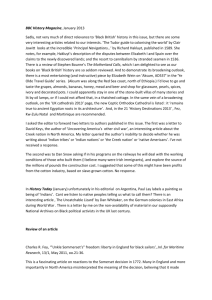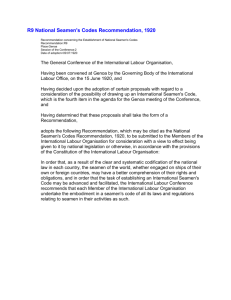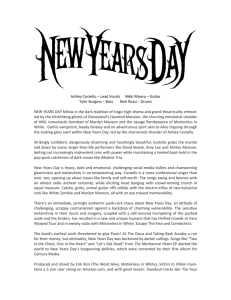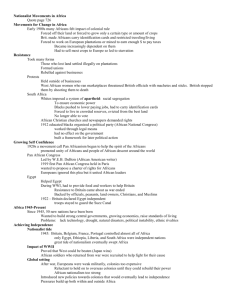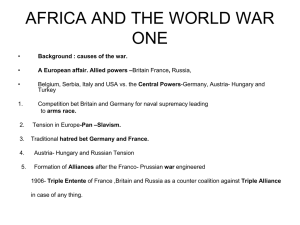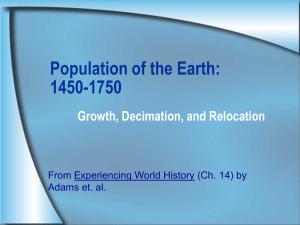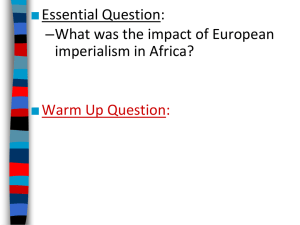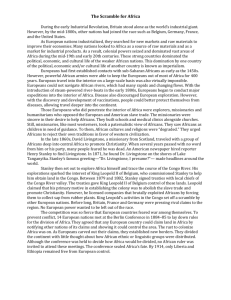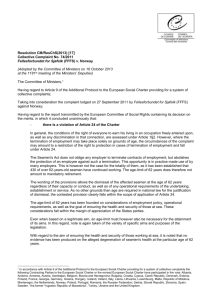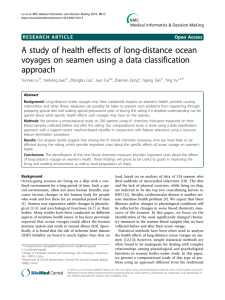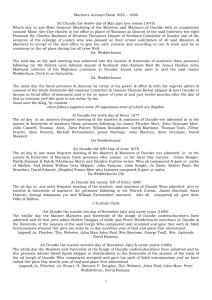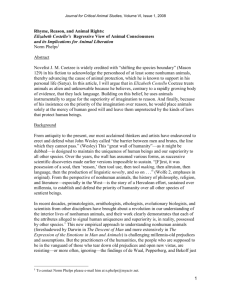here. - Black and Asian Studies Association
advertisement
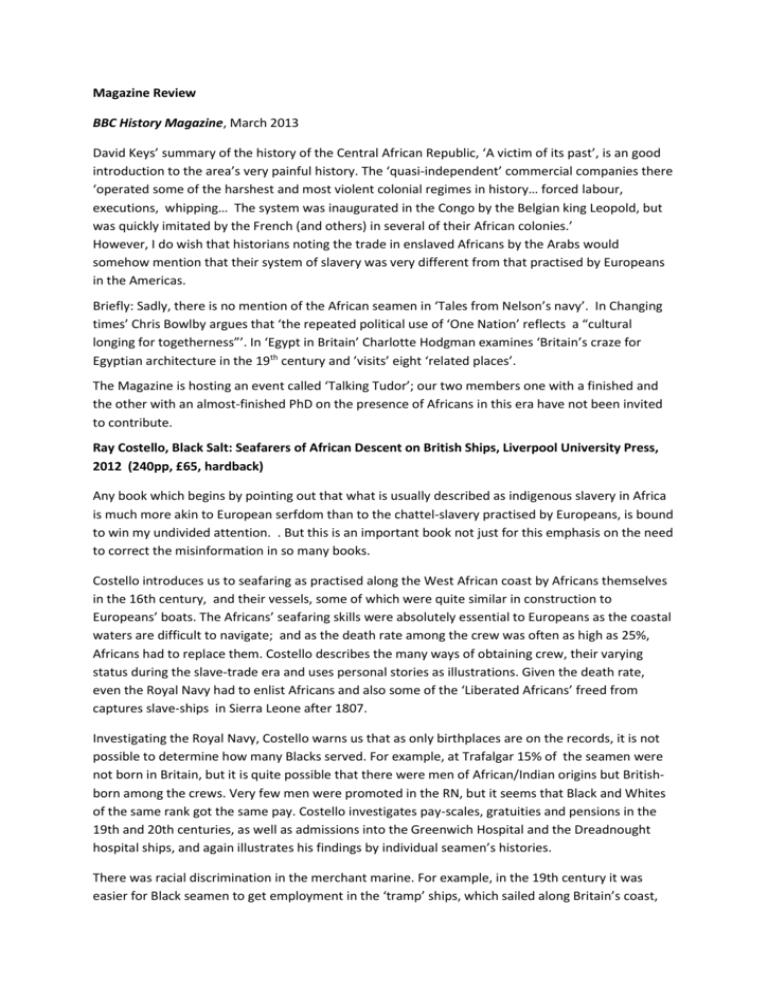
Magazine Review BBC History Magazine, March 2013 David Keys’ summary of the history of the Central African Republic, ‘A victim of its past’, is an good introduction to the area’s very painful history. The ‘quasi-independent’ commercial companies there ‘operated some of the harshest and most violent colonial regimes in history… forced labour, executions, whipping… The system was inaugurated in the Congo by the Belgian king Leopold, but was quickly imitated by the French (and others) in several of their African colonies.’ However, I do wish that historians noting the trade in enslaved Africans by the Arabs would somehow mention that their system of slavery was very different from that practised by Europeans in the Americas. Briefly: Sadly, there is no mention of the African seamen in ‘Tales from Nelson’s navy’. In Changing times’ Chris Bowlby argues that ‘the repeated political use of ‘One Nation’ reflects a “cultural longing for togetherness”’. In ‘Egypt in Britain’ Charlotte Hodgman examines ‘Britain’s craze for Egyptian architecture in the 19th century and ’visits’ eight ‘related places’. The Magazine is hosting an event called ‘Talking Tudor’; our two members one with a finished and the other with an almost-finished PhD on the presence of Africans in this era have not been invited to contribute. Ray Costello, Black Salt: Seafarers of African Descent on British Ships, Liverpool University Press, 2012 (240pp, £65, hardback) Any book which begins by pointing out that what is usually described as indigenous slavery in Africa is much more akin to European serfdom than to the chattel-slavery practised by Europeans, is bound to win my undivided attention. . But this is an important book not just for this emphasis on the need to correct the misinformation in so many books. Costello introduces us to seafaring as practised along the West African coast by Africans themselves in the 16th century, and their vessels, some of which were quite similar in construction to Europeans’ boats. The Africans’ seafaring skills were absolutely essential to Europeans as the coastal waters are difficult to navigate; and as the death rate among the crew was often as high as 25%, Africans had to replace them. Costello describes the many ways of obtaining crew, their varying status during the slave-trade era and uses personal stories as illustrations. Given the death rate, even the Royal Navy had to enlist Africans and also some of the ‘Liberated Africans’ freed from captures slave-ships in Sierra Leone after 1807. Investigating the Royal Navy, Costello warns us that as only birthplaces are on the records, it is not possible to determine how many Blacks served. For example, at Trafalgar 15% of the seamen were not born in Britain, but it is quite possible that there were men of African/Indian origins but Britishborn among the crews. Very few men were promoted in the RN, but it seems that Black and Whites of the same rank got the same pay. Costello investigates pay-scales, gratuities and pensions in the 19th and 20th centuries, as well as admissions into the Greenwich Hospital and the Dreadnought hospital ships, and again illustrates his findings by individual seamen’s histories. There was racial discrimination in the merchant marine. For example, in the 19th century it was easier for Black seamen to get employment in the ‘tramp’ ships, which sailed along Britain’s coast, than on the trans-Atlantic vessels, which later did employ them as stewards. When steamships were introduced, Black seamen did the hardest work, shovelling coal and stoking furnaces in the belowdecks sweltering engine –rooms. Though there was some sense of ‘brotherhood at sea’, to deal with discriminations Black seamen formed their own associations. These also had to serve as banks as the commercial banks often refused to give accounts to Black seamen. There are chapters on World Wars and then on the post-war era, which looks at the local naval forces when the colonies began to achieve independence. The RN retained its colour bar until the 1950s. I wish there was more on Liverpool and the other cities with large Black seafaring populations, on the struggles there by the seamen against the many forms of discriminations they had to face. And still face, says Costello, as they ‘remain to the present day in the form of lingering illogical prejudices based upon skin colour… whiteness was equated with superiority and European supremacy’. (p.212) Costello concludes by saying that the Black seamen serving in the cross-Atlantic trades ‘make the term Black Atlantic a reality’. This is a book for anyone interested in our navies, which were an absolutely integral part of the British Empire and the creation of Britain’s wealth. Given the many personal stories, it could easily be used in schools. That is, if you can afford it! Marika Sherwood
